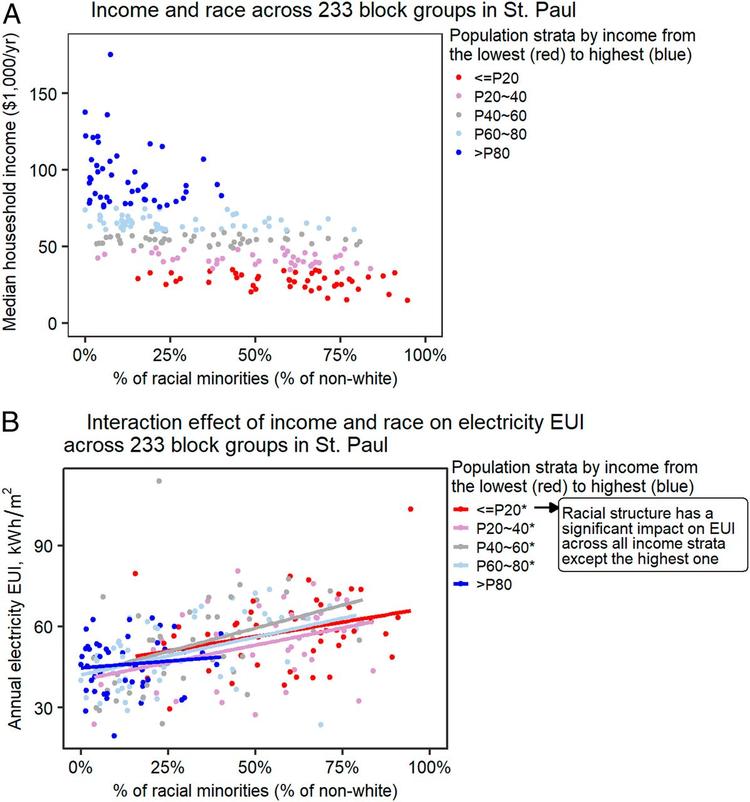
Fig. 1 from paper: Unpacking the effect of race on EUI across income strata at the block group level. (A) Structural race effects are seen wherein the highest-income block groups are predominantly White (blue dots), while the lowest-income block groups are the most racially diverse (red dots). (B) EUI inequality by race is seen across income strata in which the slope of EUI versus the percentage of racial minorities (non-White) is significant and positive, except for the highest-income stratum (>P80).
A new study led by the Sustainable Urban Systems Lab offers a roadmap for cities to address inequalities in energy use by providing fine-grained methods for measuring both income and racial disparities in energy use intensity.
Examining inequality in cities has been hampered by a lack of energy use data at fine spatial scales within cities. Until now, only Los Angeles has been able to use a data-driven approach to shine a light on where energy use inequalities exist, focusing specifically on the effect of income disparities. But according to new results reported in Proceedings of the National Academy of Sciences, to truly understand and fully address energy use inequality, cities must take an even more nuanced approach—one that unpacks race-related disparities from income. As the authors report, examining the issue solely through the lens of income risks missing significant race-related inequalities that exist beyond income effects.
The work could guide the equitable distribution of rebates and other measures that decrease energy costs and increase efficiency.
Read more about the findings in stories from NPR and Princeton Engineering.
This article is featured in the June 15, 2021 edition of PNAS: In This Issue.

